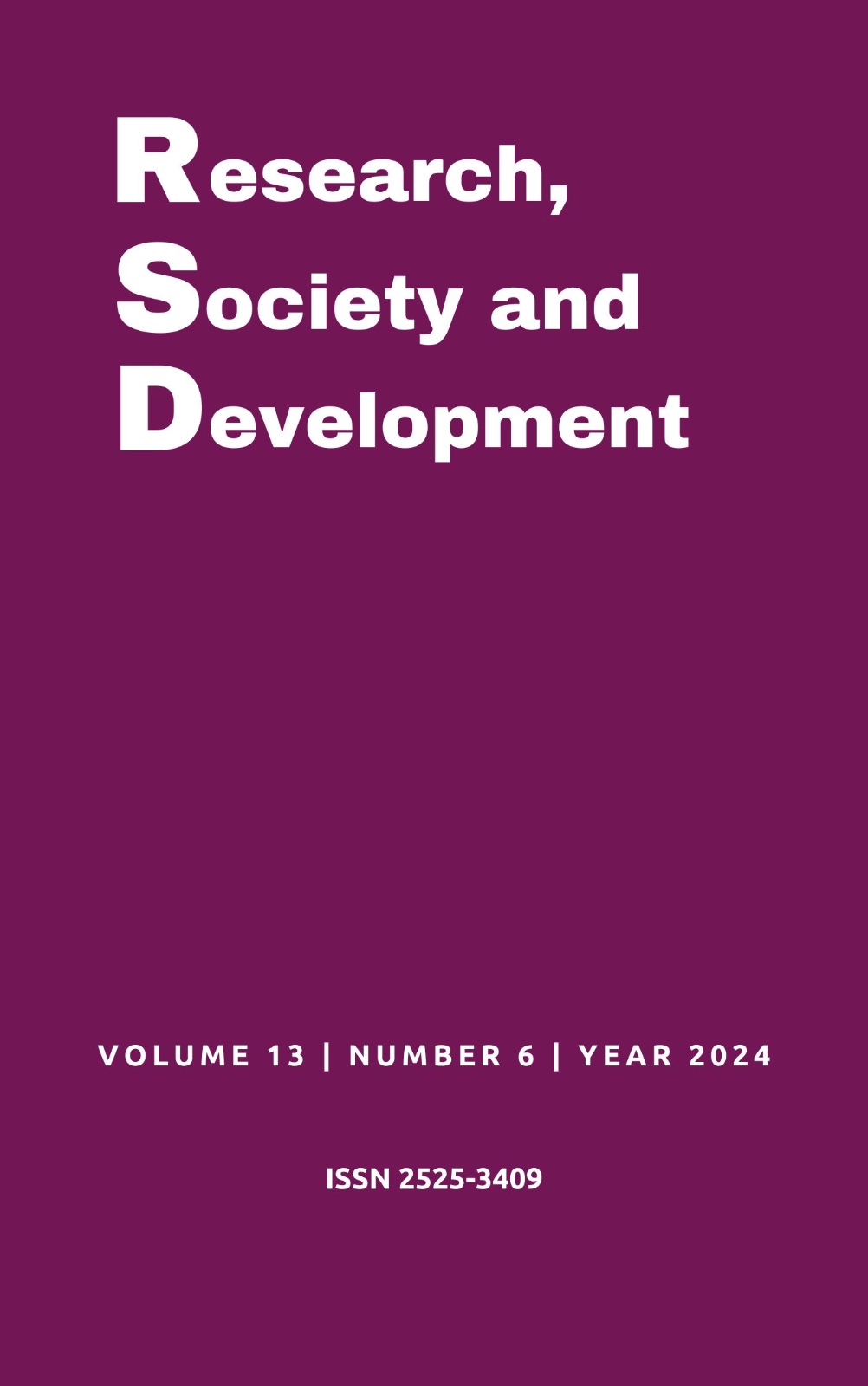Hematological findings of canine ehrlichiosis: A case study
DOI:
https://doi.org/10.33448/rsd-v13i6.46021Keywords:
Diagnosis, Ehrlichia canis, Blood count, Treatment.Abstract
Canine ehrlichiosis, caused by the bacteria Ehrlichia canis, is an infectious disease transmitted by ticks that affects dogs of all breeds, ages and sexes. Its symptoms can vary from mild to intense, and may even be asymptomatic. Diagnosis is crucial and can be made through clinical signs and hematological findings, with blood counts being an essential tool. This study investigated the hematological findings of ehrlichiosis in five cases of dogs diagnosed with the disease. Changes such as normocytic normochromic anemia, thrombocytopenia, leukocytosis and pancytopenia were observed, varying according to the stage of the disease. In severe cases, blood transfusions and fluid therapy were necessary for treatment. Discussion of the cases revealed the progression of the disease, from initial cases with subtle symptoms to severe cases with organ failure. Worsening ehrlichiosis has been associated with low platelet counts as the disease progresses, highlighting the importance of early diagnosis. It is concluded that canine ehrlichiosis represents a significant challenge for the health of dogs, and raising awareness among owners about the severity of the disease is essential. Prevention, through educational campaigns and early diagnosis through blood counts, is essential for effective treatment and a favorable prognosis for affected animals.
References
ACVIM - American College of Veterinary Internal Medicine (2017). Guidelines for Diagnosis, Treatment, and Prevention of Ehrlichiosis in Dogs. Disponível em: Investigação (acvim.org)
Aziz, M. U., Hussain, S., Canção, B., Ghauri, H. N., Zeb, J., & Sparagano, O. A. (2022). Erliquiose em Cães: Uma Revisão Abrangente sobre o Patógeno e Seus Vetores com Ênfase em Países do Sul e Leste Asiático. Vet Sci, 10(1). DOI: 10.3390/vetsci10010021.
Balwani, M., Naik, H., Anderson, K. E., Bissell, D. M., Bloomer, J., Bonkovsky, H. L., ... & Desnick, R. J. (2019). Erythropoietic Protoporphyria and X-Linked Protoporphyria: Pathophysiology, Genetics, Clinical Manifestations, and Management. Mol Genet Metab, 128(3), 298-303. DOI: 10.1001/jamadermatol.2017.1557.
Breitschwerdt, E. B. (2000). Canine and feline ehrlichiosis: tick-borne diseases in perspective. The Veterinary Clinics of North America. Small Animal Practice, 30(1), 99-117. DOI: 10.3390/vetsci10010021.
Day, M. J., Breitschwerdt, A. J., & Cleaveland, E. M. (2018). Guidelines for the diagnosis and clinical management of canine vector-borne diseases. Journal of the American Animal Hospital Association, 54(2), 1-28. DOI: 10.1186/s13071-021-04799-y.
De Oliveira, A. S., et al. (2022). Hemograma: correlação entre a hemoglobina e os índices hematimétricos. Brazilian Journal of Development, 8(2), 13304-13316. DOI: https://doi.org/10.34117/bjdv8n2-322.
Ev, L. S., Gomes, A. B. P. (2014). Entre a especificidade e a teorização: a metodologia do estudo de caso. Teoria e Sociedade, 22(2), 75-103. Disponível em: 191-343-1-SM.pdf.
Ferreira, B. E., César, P. V. P., Pereira, C. T., Lima, J. R., & Ono, P. Y. A. (2021). Manifestações Hematológicas da Erliquiose Monocítica Canina. Revisão de Literatura. Revista Multidisciplinar em Saúde, 2(3), 131. DOI: https://doi.org/10.51161/rems/2394.
Greene, C. E. (2011). Infectious diseases of the dog and cat (4th ed.). Elsevier.
Harrus, S., & Waner, E. A. (2008). Ehrlichiosis and anaplasmosis. Infectious Disease Clinics of North America, 22(3), 511-526. DOI: 10.1016/j.tvjl.2010.02.001.
Johnson, E. M., Eberts, J. M., & Pappalardo-Blumer, L. D. (2020). Clinical manifestations and diagnosis of canine ehrlichiosis. In Ehrlichiosis: A Vector-Borne Disease of Animals and Humans (pp. 37-58). Springer. DOI: https://doi.org/10.1007/978-3-642-76643-5_8.
Klopfleisch, M., et al. (2019). Epizootiology and clinical signs of canine leptospirosis. Journal of Veterinary Internal Medicine, 24(4), 350-360. DOI:10.1111/j.1939-1676.2010.0654.
Levy, C., Dickey, A. K., Wang, B., Thapar, M., Naik, H., Keel, S. B., ... & Desnick, R. J. (2024). Evidence-based consensus guidelines for the diagnosis and management of protoporphyria-related liver dysfunction in erythropoietic protoporphyria and X-linked protoporphyria. Hepatology, 79(3), 731-743. DOI: 10.1097/HEP.00000000000000546.
Moura, J. P., O'Dwyer, M. H., & Barradas, D. R. (2018). Diagnóstico laboratorial de erliquiose canina. Revista Portuguesa de Ciências Veterinárias, 113, 1-10.
Nelson, R., & Couto, G. (2010). Medicina interna de pequenos animais (4th ed.). Elsevier.
Silva, J. F. (2019). Uso da doxiciclina no tratamento da erliquiose canina. Revista Brasileira de Medicina Veterinária, 18(2), 45-52.
Smith, J. (2020). Ehrlichiosis in Dogs: Symptoms, Diagnosis, and Treatment. Journal of Veterinary Medicine, 45(3), 112-125. DOI: 10.3390/vetsci10010021.
Woody, B. J., & Hoskins, J. D. (1991). Ehrlichial diseases of dogs. Vet Clin North Am: Small Anim Pract, 21, 75-98. DOI: 10.1016/s0195-5616(91)50009-7
Abstrair.
Downloads
Published
Issue
Section
License
Copyright (c) 2024 João Pedro Mendonça Bothrel; Laura Aschar Maciel; Luiz Antonio Terra de Oliveira; Letícia Ferreira Costa; Ivana Araújo

This work is licensed under a Creative Commons Attribution 4.0 International License.
Authors who publish with this journal agree to the following terms:
1) Authors retain copyright and grant the journal right of first publication with the work simultaneously licensed under a Creative Commons Attribution License that allows others to share the work with an acknowledgement of the work's authorship and initial publication in this journal.
2) Authors are able to enter into separate, additional contractual arrangements for the non-exclusive distribution of the journal's published version of the work (e.g., post it to an institutional repository or publish it in a book), with an acknowledgement of its initial publication in this journal.
3) Authors are permitted and encouraged to post their work online (e.g., in institutional repositories or on their website) prior to and during the submission process, as it can lead to productive exchanges, as well as earlier and greater citation of published work.


